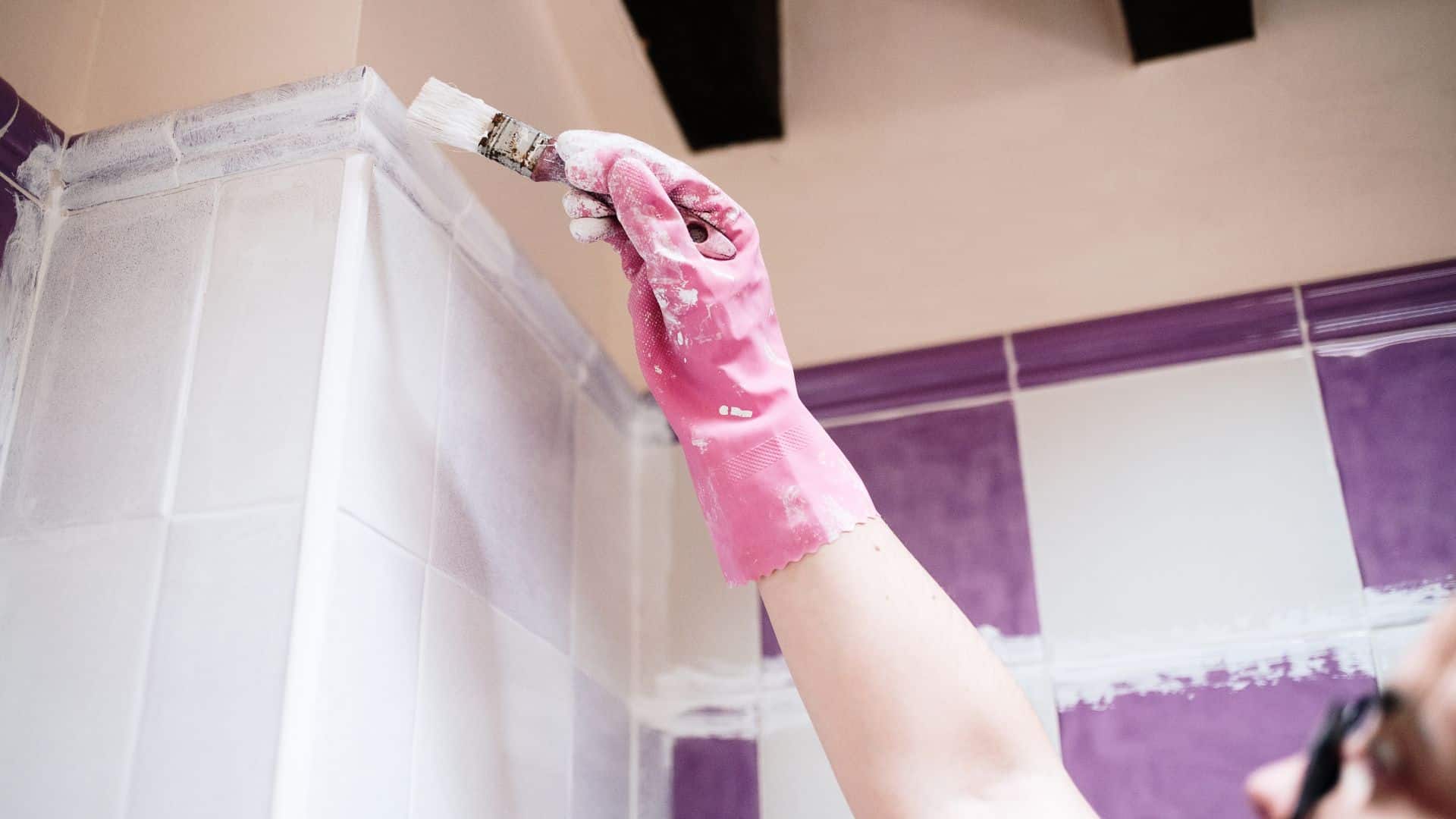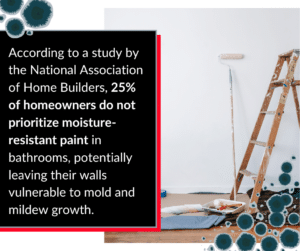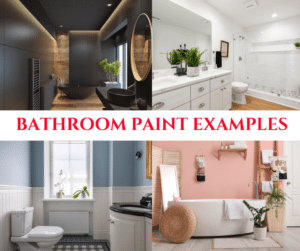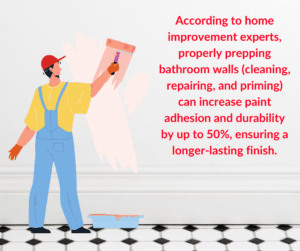
When it comes to bathroom renovations, choosing the right bathroom paint is essential. Not only does the paint impact your bathroom’s overall look, but it also plays a significant role in the longevity of your walls and preventing moisture damage. In this guide, we’ll explore what makes bathroom paint different from regular interior paint and how to pick the best one for your home.
Why Bathroom Paint Is Different
Bathrooms face unique challenges that other rooms in the house don’t. High humidity and constant exposure to moisture can cause paint to deteriorate quickly if you don’t choose the right product. Regular interior paint might not be designed to withstand these harsh conditions, which is why bathroom-specific paint is crucial.
Unlike other rooms, bathrooms are constantly exposed to steam from showers and baths, and this moisture can lead to peeling paint, bubbling, or even mold growth. Standard paint just won’t do the job. You need a type of paint that not only looks good but also holds up under these conditions.

Key Features to Look for in Bathroom Paint
When selecting bathroom paint, it’s important to prioritize features that cater to the unique environment of a bathroom. Here are some key elements to look out for:
-
Moisture Resistance: Bathroom paint is formulated with moisture-resistant additives that prevent mildew and mold buildup. This is one of the most important features because bathrooms are naturally damp environments.
-
Durability: Bathrooms experience more wear and tear than other areas of your home, so the paint needs to be durable enough to withstand daily use. Choose a paint that can handle scrubbing and wiping without losing its color or texture.
-
Ease of Cleaning: Bathroom walls often get splashed with water, soap, and toothpaste. Choosing a paint that’s easy to wipe down ensures that your walls stay fresh-looking with minimal effort. A washable finish is key for long-term maintenance.
-
Breathability: Some bathroom paints allow moisture to escape, which helps reduce the risk of mold growth. This feature is especially useful in bathrooms with less ventilation.
By choosing bathroom paint that has these essential features, you’ll ensure that your paint job lasts longer and looks better, even in a room with high humidity.
Types of Paint Finishes for the Bathroom
When it comes to bathroom paint finishes, not all options are created equal. The finish you choose for your bathroom will affect both the aesthetics and functionality of the space. Let’s break down the different types of finishes and what works best for a bathroom:
-
Matte Finish: Matte finishes are beautiful but can be harder to clean. While they do a good job of hiding imperfections on the wall, they’re not ideal for a bathroom where you’ll frequently be wiping down surfaces.
-
Glossy Finish: A glossy finish is highly durable and easy to clean, but it may highlight imperfections on your walls. It also tends to show streaks more easily, which can be a downside in a bathroom with lots of moisture.
-
Satin or Semi-Gloss Finish: These finishes are the most recommended for bathrooms. They offer the perfect balance between durability and aesthetic appeal. Satin and semi-gloss finishes are easy to clean and maintain, and they resist moisture and mildew better than flat finishes. This makes them perfect for high-humidity environments like bathrooms.
For most bathrooms, satin or semi-gloss paint will provide the best results. These finishes are both attractive and functional, ensuring that your bathroom remains beautiful and well-maintained for years to come.
Choosing the Right Color for Your Bathroom

The color of your bathroom paint can transform the entire room. The right color can make a small bathroom appear larger, brighten up a space, or create a relaxing atmosphere. When selecting bathroom paint colors, consider the following:
-
Light Colors: Lighter shades like whites, soft blues, or light grays reflect more light and can make a small bathroom feel larger and airier. These colors are especially helpful if you don’t have a lot of natural light.
-
Dark Colors: Darker shades like navy or charcoal can create a bold, modern look. However, dark colors can make a bathroom feel smaller and might make the space feel cramped if not paired with the right lighting.
-
Neutral Tones: Neutral tones, such as beige or soft taupe, are timeless choices that can create a calm and soothing bathroom atmosphere. These colors work well with most décor styles and are versatile enough to fit any bathroom size.
-
Accent Walls: If you love color but don’t want to overwhelm the room, consider using a bold color on one accent wall. This can create a focal point without making the whole room feel too intense.
You don’t need to go overboard with color—just a few simple tweaks can completely change the mood of your bathroom. The right color will enhance the overall feel of the space and make it a more enjoyable place to be.
How to Properly Prepare Your Bathroom Walls Before Painting
Preparation is key when painting any room, but it’s especially important in the bathroom. The right prep work ensures that the paint will adhere properly and that you’ll get the best possible results. Here’s how to prepare your bathroom walls:
-
Clean the Surface: Dirt, grime, soap scum, and water stains can prevent paint from sticking properly. Clean the walls thoroughly before painting, using a mild detergent and water. For tougher spots, use a scrubbing brush or a sponge.
-
Fix Any Imperfections: Before painting, repair any cracks or holes in the walls. Use spackle to fill in small imperfections and sand the area smooth. This will help the paint adhere evenly and create a flawless finish.
-
Prime the Walls: Priming is essential, especially if you’re painting over a darker color or if the walls have mold or mildew. Use a high-quality primer designed for bathrooms to ensure that the paint bonds well to the surface.
By taking the time to properly prepare your walls, you’ll ensure that your bathroom paint job lasts longer and looks better.

Common Mistakes to Avoid When Painting Your Bathroom
When painting your bathroom, there are several mistakes you’ll want to avoid to ensure a high-quality finish. Here are some common mistakes to watch out for:
-
Using the Wrong Type of Paint: Don’t use regular interior paint for your bathroom. It won’t hold up to moisture and humidity. Always choose a paint that’s specifically formulated for bathrooms.
-
Skipping the Primer: Skipping the primer can lead to poor paint adhesion and uneven coverage. Always prime your bathroom walls before applying paint.
-
Choosing the Wrong Finish: Not all finishes are ideal for bathrooms. Matte finishes are difficult to clean and prone to mildew buildup, while glossy finishes can highlight imperfections. Stick with satin or semi-gloss for the best results.
-
Not Allowing Enough Drying Time: Bathrooms are often damp, and paint takes longer to dry in humid environments. Make sure to allow adequate drying time between coats and before using the bathroom.
Avoiding these common mistakes will help you achieve a professional-looking bathroom paint job.
Maintenance Tips for Long-Lasting Bathroom Paint
Once your bathroom is painted, the work doesn’t stop there. Proper maintenance will help your paint last longer and keep your bathroom looking fresh. Here are some tips for maintaining your bathroom paint:
-
Clean Regularly: Wipe down your bathroom walls regularly to remove soap scum, water spots, and dirt. Use a gentle cleaner and avoid abrasive scrubbers that can damage the paint.
-
Check for Signs of Mold: Mold and mildew can build up in damp environments, so inspect your bathroom walls regularly for signs of mold. If you notice any, clean it off immediately with a mold-killing cleaner.
-
Touch Up When Necessary: Over time, bathroom paint can wear away in high-traffic areas or areas exposed to water. Touch up these spots as needed to keep the room looking fresh.
By following these maintenance tips, your bathroom paint will remain in good condition for years to come.
Conclusion
Choosing the right bathroom paint is crucial for ensuring the longevity and aesthetic appeal of your bathroom. By selecting paint with moisture resistance, durability, and easy-to-clean features, you’ll protect your walls from mold and mildew while keeping the space looking beautiful. Remember to choose the right finish and color to enhance the bathroom’s overall ambiance.
If you’re unsure about your bathroom’s condition or suspect hidden moisture issues, consider scheduling a home inspection. Our expert home inspectors can identify potential moisture problems and help you make informed decisions about your bathroom renovations. Contact us today for a thorough inspection, and ensure your bathroom remains in great shape for years to come!



